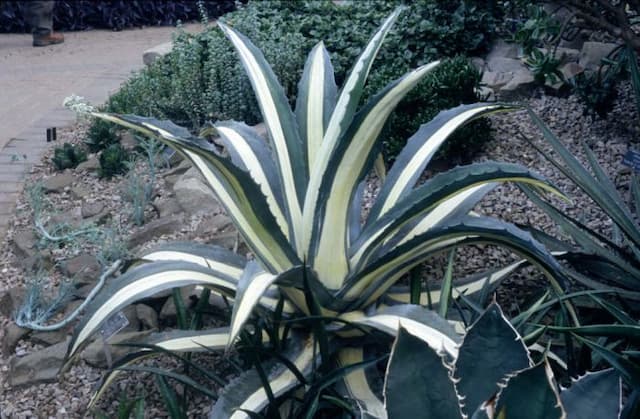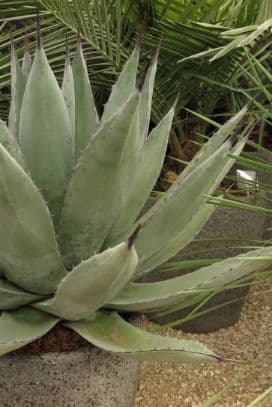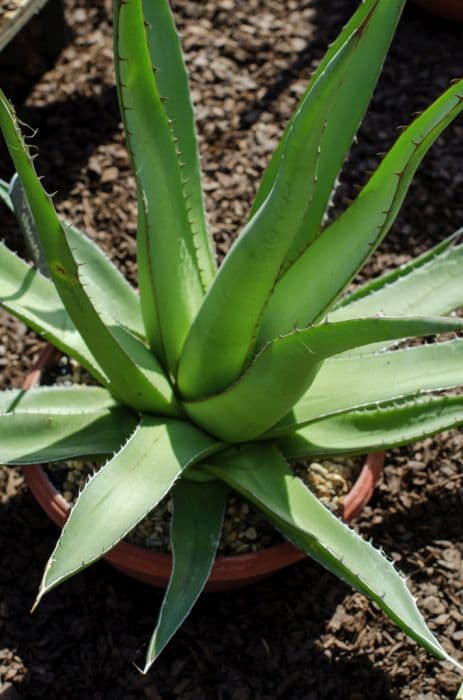Narrowleaf Solomon's Seal Polygonatum stenanthum

ABOUT
Polygonatum stenanthum, commonly known as Solomon's seal, presents itself with a distinct elegant appearance. This hardy perennial is recognized by its arching stems from which oval-shaped leaves grow in an alternating pattern. The leaves are typically bright to dark green, providing a lush backdrop for the charming flowers that dangle below the stem. The flowers of Solomon's seal are small, tubular, and usually white or cream-colored, sometimes displaying a greenish tinge. They are often found in pairs or alone, hanging gracefully from the leaf axils. After the flowering season, these blooms give way to small, round berries that can be dark blue or black when ripe, offering a striking contrast to the foliage. Solomon's seal makes an attractive addition to shade gardens or woodland settings, where its delicate blooms and berries can be observed up close, lending a touch of wilderness charm to the landscape. The smooth texture of the leaves, along with the gentle sway of the stems, creates a peaceful and naturalistic feel wherever the plant is grown.
About this plant
 Names
NamesFamily
Asparagaceae
Synonyms
Narrow-Leaved Solomon's Seal, Slim-Stemmed Solomon's Seal
Common names
Polygonatum stenanthum.
 Toxicity
ToxicityTo humans
Polygonatum stenanthum, commonly known as Solomon's seal, is generally not regarded as highly toxic to humans, but it should still be consumed with caution if identification is certain. Some species within the genus Polygonatum can contain compounds such as saponins that can be mildly toxic if ingested. Ingesting parts of Solomon's seal can lead to symptoms such as nausea, vomiting, diarrhea, and abdominal pain. These effects are typically not life-threatening but can be uncomfortable and may require medical attention if symptoms persist or are severe.
To pets
Solomon's seal is not typically listed as a highly toxic plant to pets, but like in humans, it contains saponins which can cause mild to moderate gastrointestinal upset if ingested. If your pet consumes Solomon's seal, you may observe symptoms such as vomiting, diarrhea, and abdominal pain. It’s important to monitor your pet and consult with a veterinarian if any concerning symptoms arise or if they consume a large amount of the plant.
 Characteristics
CharacteristicsLife cycle
Perennials
Foliage type
Deciduous
Color of leaves
Green
Flower color
White
Height
1-3 feet (0.3-0.9 meters)
Spread
1-2 feet (0.3-0.6 meters)
Plant type
Herb
Hardiness zones
4
Native area
Asia
Benefits
 General Benefits
General Benefits- Ornamental value: Polygonatum stenanthum, commonly known as narrow-leaved Solomon's seal, adds aesthetic value to gardens with its arching stems and hanging, tubular flowers.
- Shade tolerance: This plant is capable of thriving in shady areas where sunlight is limited, making it suitable for woodland gardens and shaded borders.
- Wildlife support: The flowers provide nectar to pollinating insects such as bees, while the berries can serve as a food source for birds.
- Drought resistance: Once established, narrow-leaved Solomon's seal is relatively drought-tolerant, requiring minimal watering in temperate climates.
- Soil stabilization: The rhizomes of Polygonatum stenanthum help in stabilizing the soil and preventing erosion, especially in shaded and woodland areas.
- Seasonal interest: The plant has a seasonal progression of interest, from its spring flowers to summer foliage and finally to fall colors and berries.
 Medical Properties
Medical Properties- Anti-inflammatory: used in traditional medicine to reduce inflammation.
- Immunomodulatory: may influence the immune system and improve immune response.
- Antioxidant: contains compounds that could help in eliminating free radicals from the body.
- Antitumor: contains constituents which might exhibit antitumor properties.
- Antidiabetic: might help in modulating blood glucose levels.
- Neuroprotective: could offer protection against certain neurodegenerative diseases or deterioration.
- Hepatoprotective: potentially protects the liver from damage and promotes healing.
 Air-purifying Qualities
Air-purifying QualitiesThis plant is not specifically known for air purifying qualities.
 Other Uses
Other Uses- Polygonatum stenanthum, commonly known as Narrow-Leaved Solomon's Seal, can be used as a food source; its young shoots are edible and can be cooked similar to asparagus.
- The rhizomes of Narrow-Leaved Solomon's Seal can be dried and ground into a flour substitute for baking purposes.
- This plant's fibers may be used in the creation of small crafts or woven into a rudimentary fabric.
- Narrow-Leaved Solomon's Seal is occasionally planted as an ornamental species for its arching stems and attractive foliage in shade gardens or woodland settings.
- The flowers can be included in floral arrangements, especially in the spring when they are in bloom, providing a delicate and unique appearance.
- Leaves of the Narrow-Leaved Solomon's Seal may be utilized in the art of plant pressing due to their interesting veined patterns and shapes for crafts or educational purposes.
- The berries of the plant, while not commonly used, can provide a natural dye for fabrics, though caution should be used as some parts of the plant might be toxic if not handled properly.
- Culturally, the plant has been a component in various indigenous rituals and ceremonies as a symbol of tranquility and healing.
- Because of its resilience and low maintenance, it's used in landscaping for ground cover to control soil erosion on shaded slopes.
- Narrow-Leaved Solomon's Seal's seed pods can be used in dried flower arrangements for decoration, offering a rustic charm to the composition.
Interesting Facts
 Feng Shui
Feng ShuiThe plant Solomon's Seal is not used in Feng Shui practice.
 Zodiac Sign Compitability
Zodiac Sign CompitabilityThe plant Solomon's Seal is not used in astrology practice.
 Plant Symbolism
Plant Symbolism- Longevity: Similar to other species in the genus Polygonatum, such as Solomon’s Seal, Polygonatum stenanthum is believed to symbolize long life due to its hardy nature and perennial growth.
- Healing: Many Polygonatum species have been used in traditional medicine. This association with healing gives Polygonatum stenanthum the symbolic meaning of health and recovery.
- Protection: In folklore, Solomon’s Seal was often thought to offer protection against negative energies, a meaning that could extend to Polygonatum stenanthum as a member of the same genus.
 Water
WaterSolomon's Seal prefers soil that remains consistently moist but not waterlogged. It should be watered thoroughly, allowing the soil to become somewhat dry between waterings. As a general rule, watering approximately once a week with about 24 ounces of water works well. During hot or dry weather, increase watering frequency to maintain proper soil moisture. In winter, reduce watering as the plant goes dormant and requires less moisture.
 Light
LightSolomon's Seal thrives best in partial to full shade. It can tolerate some morning sunlight but should be protected from harsh afternoon sun. A north-facing or east-facing spot that receives dappled light is ideal for this plant, ensuring it isn't exposed to the intense direct sunlight that could scorch its leaves.
 Temperature
TemperatureSolomon's Seal performs well in a wide range of temperatures, typically between 50°F and 85°F. The plant can survive minimum temperatures down to around 5°F for brief periods. The ideal temperature for optimal growth tends to be in the 60°F to 70°F range.
 Pruning
PruningPruning Solomon's Seal is primarily done to remove dead or yellowing foliage and to control plant size. Pruning can be carried out in late fall or early winter, after the plant has gone dormant. Cut back any spent stems to ground level, and if necessary, divide the plant to manage its spread.
 Cleaning
CleaningAs needed
 Soil
SoilNarrow-leaved Solomon's Seal thrives in a well-draining, loamy soil mix enriched with organic matter such as compost or leaf mold. The ideal pH for this plant ranges from slightly acidic to neutral, around 5.5 to 7. A mix of two parts garden soil, one part peat, and one part perlite or sand can create a suitable growing medium for this woodland perennial.
 Repotting
RepottingNarrow-leaved Solomon's Seal should be repotted every 2-3 years to refresh the soil and provide room for root growth. It's best to repot in the early spring before the growing season begins.
 Humidity & Misting
Humidity & MistingNarrow-leaved Solomon's Seal prefers a moderately humid environment, similar to its natural woodland habitat. Aim for a humidity level between 40% to 60%, ensuring that the air around the plant isn't too dry to mimic its preferred conditions.
 Suitable locations
Suitable locationsIndoor
Place Narrow-leaved Solomon's Seal in bright, indirect light with moderate humidity.
Outdoor
Plant Narrow-leaved Solomon's Seal in partial shade, rich soil, and moist conditions.
Hardiness zone
4-8 USDA
 Life cycle
Life cyclePolygonatum stenanthum, commonly known as Solomon's Seal, starts its life cycle as a rhizome underground, which sends up shoots in the spring. The shoots grow into arching stems with alternate leaves and small, tubular flowers hanging from the leaf axils. After pollination, typically by bees, the flowers develop into blue-black berries that contain seeds. The plant dies back to the rhizome each autumn, entering a period of dormancy over winter. During this dormant phase, the rhizome stores energy for the next growing season. As the cycle repeats annually, the rhizome slowly expands, allowing the plant to spread and create larger colonies over time.
 Propogation
PropogationPropogation time
Spring to Summer
Propogation: Solomon's Seal, or Polygonatum stenanthum, is typically propagated through division of rhizomes, which is the most popular method. The best time to carry out this process is in the early spring or fall, when the plant is dormant. To propagate by division, carefully dig up the clump of rhizomes, ensuring to keep a good amount of soil around the roots. Using a sharp knife, divide the rhizome into sections, making sure each section has at least one growing point or bud. Replant the divisions promptly, placing them at the same depth they were growing previously, usually around an inch or two (2.5 to 5 cm) below the soil surface. It’s important to water the new plants thoroughly after planting to help establish them. This method is effective because it maintains the genetic characteristics of the parent plant and allows for a relatively quick establishment of new plants.









